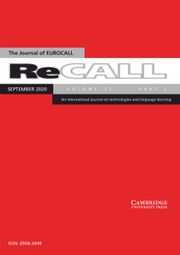Article contents
Language learner perspectives on the functionality and use of electronic language dictionaries
Published online by Cambridge University Press: 05 January 2015
Abstract
This paper investigates the extent of electronic dictionary use by language learners in an Australian university. All students in the study are formally enrolled in language courses across ten languages at first, second or third year level. The study places a particular emphasis on gauging student perceptions of the beneficial aspects of electronic dictionaries as judged by learners themselves in circumstances where they are able to act independently. As these benefits are often described in terms of usability and functionality, these particular terms are defined and introduced in the literature review, and then later they are employed to help structure and describe the results.
The arguments for the discussion are supported by the use of empirical data taken from a large-scale survey conducted in 2011 (n=587) where comments from students were obtained on why and how dictionary-type resources were accessed and used (see also Steel & Levy, 2013). The paper restricts itself to the quantitative and qualitative data gathered on mobile phones, translators, dictionaries and web conjugators and related items (e.g. discussion forums). The particular functions that students use and the ways in which they use them are described and categorised, with the discussion supported by student comments.
The data exhibits a remarkable range of resources available to students to look up unknown words or to see translations and, consequently, our understanding of what exactly an electronic dictionary might comprise is challenged. Many students’ comments demonstrate a sophistication and knowledge about the effective use of these dictionary tools together with a keen awareness of their limitations.
Information
- Type
- Regular papers
- Information
- Copyright
- Copyright © European Association for Computer Assisted Language Learning 2015
References
- 37
- Cited by


